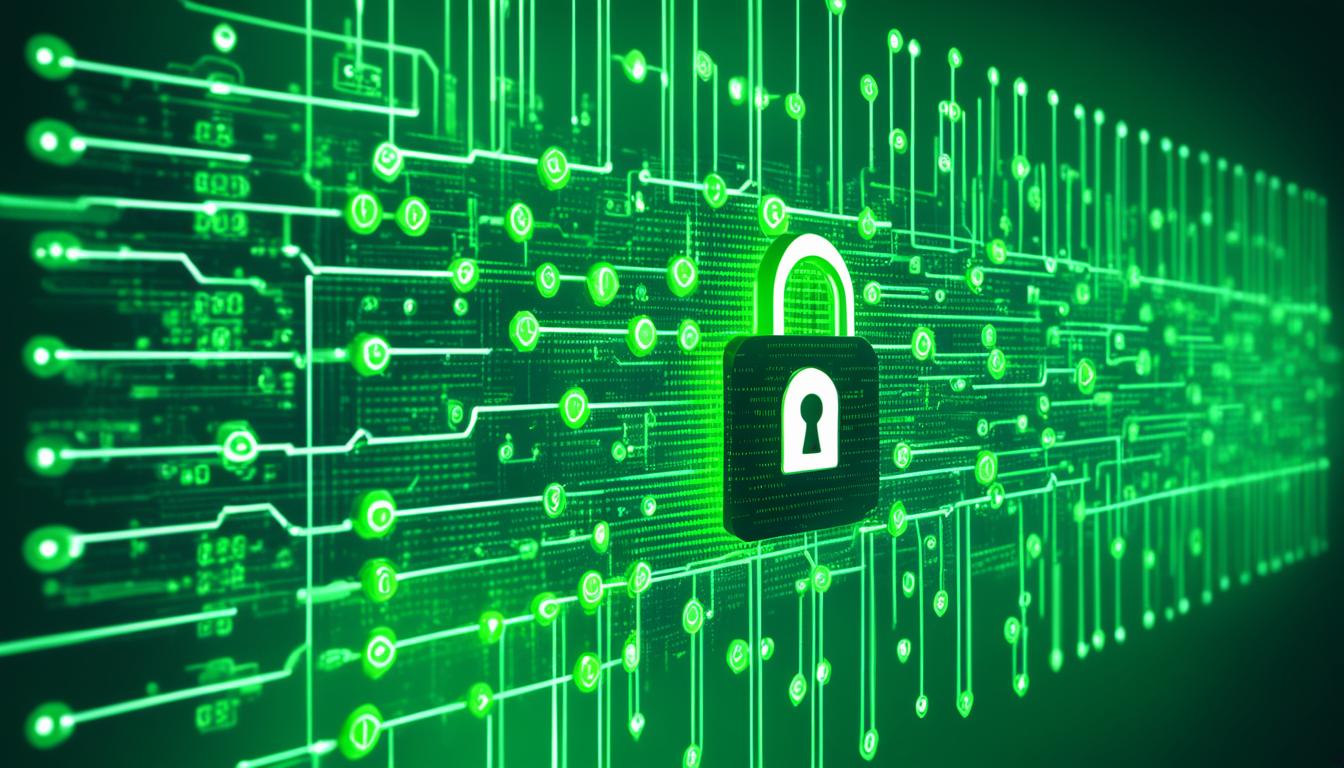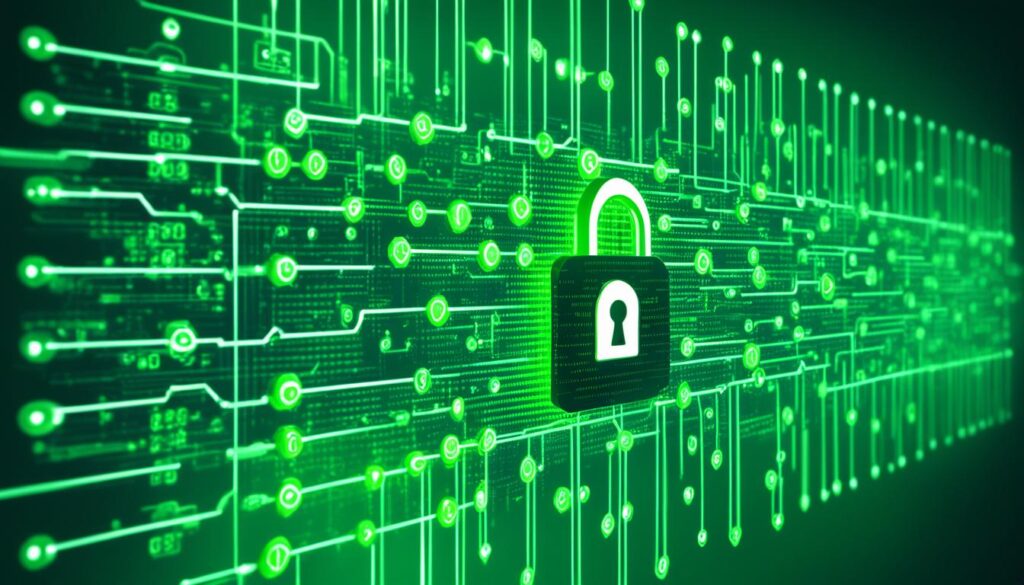Cybersecurity vs Information Security: What’s Different?

Cybersecurity vs Information Security: What’s Different?
In today’s world, technology is key to our daily lives. This makes cybersecurity and information security very important. However, many need clarification on these terms, not knowing their differences. What’s the main difference between protecting your data and keeping your organization safe from cyber threats?
Key Takeaways
- Cybersecurity protects digital assets and systems from threats. Information security keeps information safe, ensuring it’s private, whole, and accessible.
- Cybersecurity deals with defending networks, responding to incidents, and tracking threats. Information security focuses on managing data, controlling access, and following rules.
- Knowing the unique roles of cybersecurity and information security is key to a strong security plan.
- Combining these two areas can make an organization more secure and resilient against cyber risks.
- Keeping up with the latest in cybersecurity and information security is vital for businesses and people to stay safe online.
Understanding the Cybersecurity Landscape
In today’s digital world, organizations face many cybersecurity threats. These threats include everything from complex cyberattacks to big data breaches. It’s important to know about these threats to keep our online world safe.
Read More: What is Cybersecurity? Types, Threats, and Cyber Safety Tips
Cybersecurity Threats and Risks
There are many threats out there, like malware, phishing scams, and ransomware. These threats can harm our data and systems. They can also hurt a company’s finances and reputation.
It’s important to find and fix these risks. This is where vulnerability assessments and threat detection come in. They help us deal with these dangers.

The Importance of Cybersecurity in Today’s Digital World
Cybersecurity is key in today’s business world. Companies use digital tech to innovate, work better, and connect with customers. However, this makes them more vulnerable to cyber-attacks and data breaches.
Good cybersecurity is a must to protect our data and keep our businesses running. It’s important to invest in strong cybersecurity plans. This helps us stay safe from cyber threats and keep our online world secure.
Read More: Why is Cyber Security Important?
Defining Information Security
Information security is key in today’s business world. It protects an organization’s sensitive data. This ensures it stays confidential, whole, and easily accessible. It’s all about keeping an organization’s data safe from unauthorized access or misuse.
The main goals of information security are:
- Confidentiality: Making sure only those allowed can see sensitive info.
- Integrity: Keeping information accurate, complete, and reliable from start to finish.
- Availability: Making sure authorized people can get the info they need when they need it.
To meet these goals, security experts use many security steps, controls, and rules. These steps protect data, keep businesses running smoothly, and follow the law in our changing digital world.
Putting information security first helps organizations create strong, safe systems. These systems protect their important data. They also keep the trust of customers, partners, and stakeholders.
Read More: Different Types of Cyber Security: A Comprehensive Guide
Key Differences Between Cybersecurity and Information Security
Cybersecurity and information security may seem alike, but they cover different areas. It’s important to know the main differences for those looking to protect digital assets.
Scope and Focus
Cybersecurity focuses on keeping an organization’s digital stuff safe. This includes computers, networks, and data from hackers and threats. Information security is wider, protecting all kinds of information, digital or physical, from being accessed or changed without permission.
Roles and Responsibilities
- Cybersecurity experts work on network security, finding vulnerabilities, responding to incidents, and analyzing threats.
- Information security pros handle a variety of tasks. These include classifying data, controlling access, managing risks, and following rules like NIST guidelines.
The pay for cybersecurity and information security jobs changes based on where you work, your experience, and your skills. Getting an information security course or a cybersecurity vs information security degree can boost your career.
Cybersecurity vs Information Security: What’s Different?
Cybersecurity and information security are related but have different focuses. Cybersecurity aims to protect digital assets like networks and data from threats like hacking. Information security focuses on keeping all information safe, no matter its form or where it is.
Cybersecurity experts work on finding threats and managing vulnerabilities to lessen their effects. They also handle responding to security breaches. Information security experts focus on making and following rules to keep data safe from creation to destruction.
There’s also a big difference in how they deal with rules and oversight. Both must follow certain standards and laws. However, information security often has to be stricter to meet laws like HIPAA and GDPR.
In the end, cybersecurity and information security help protect an organization’s digital assets and keep its information safe. Knowing the differences between them helps organizations protect their data and networks better.
- Cybersecurity focuses on protecting digital assets from cyber threats.
- Information security ensures the confidentiality, integrity, and availability of all information.
- Cybersecurity prioritizes threat detection, vulnerability management, and incident response.
- Information security develops and implements policies, processes, and controls to safeguard data.
- Information security often has a more stringent focus on compliance with industry standards and regulations.
Cybersecurity Strategies and Best Practices
In today’s digital world, keeping data safe is key. Cybersecurity strategies and best practices help protect companies from cyber threats. By managing risks and checking for weak spots, companies can stay strong against cyber attacks.
Risk Management and Vulnerability Assessments
Managing risks means looking at and sorting out cybersecurity threats. By doing detailed checks, companies can find and fix weak spots in their security. This helps them use better security steps, like controlling access and using ethical hacking, to protect against cyber threats.
Incident Response and Disaster Recovery
Even with good prevention, cyber attacks can still happen. Having a plan for responding to incidents is crucial. It helps stop the damage, reduce downtime, and get things back to normal fast. Disaster recovery plans help companies quickly get back important data and systems after a cyber attack or disaster.
Using a complete approach to cybersecurity helps companies stay strong against new threats. This makes them more resilient and better protected.
Read More: Information Technology Security Solutions: Protect Your Data
Information Security Policies and Compliance
Protecting information is more than just using technical tools. It needs a full plan with clear policies and following rules. These steps are key to keeping an organization’s private data safe. They make sure the data is private, whole, and easy to get to.
Regulatory Frameworks and Industry Standards
Companies face many rules and best practices to keep data safe. Important ones include:
- General Data Protection Regulation (GDPR) – Covers how to handle and protect personal data in the European Union.
- Health Insurance Portability and Accountability Act (HIPAA) – Sets rules for security and privacy in the U.S. healthcare field.
- Payment Card Industry Data Security Standard (PCI DSS) – Requires security steps for companies that deal with credit card info.
- ISO/IEC 27001 – A global standard for managing information security systems (ISMS).
Following these rules shows an organization cares about security compliance, data privacy, and using strong access controls and security protocols.
Matching information security policies with regulatory frameworks and industry standards helps manage risks. It keeps sensitive data safe and follows the law.
Read More: Is Cyber Security Expensive?
Integrating Cybersecurity and Information Security
In today’s digital world, cybersecurity threats and data breaches are common. Organizations need a full approach to protect their systems and data. By combining cybersecurity and information security, companies can boost their security and make sure their information is safe.
Cybersecurity protects digital assets like networks, devices, and data from unauthorized access or harm. Information security focuses on keeping sensitive data safe, no matter its form or where it is. Together, these two areas create a strong security plan that covers both tech and how things work.
Putting cybersecurity and information security together has many benefits, including:
- Improved data protection: This combo helps keep sensitive data safe and follows industry rules.
- Enhanced network security: Strong network security and managing vulnerabilities can prevent cyber attacks.
- Streamlined compliance: This mix makes it easier to follow rules from groups like HIPAA, PCI-DSS, and GDPR.
- Strengthened security measures: A full security plan leads to better controls, like access management and encryption.
- Increased information assurance: This approach ensures data and systems are safe, private, and available.
By combining cybersecurity and information security, companies create a security-focused culture. This protects their assets and builds trust with everyone involved.
Emerging Trends and Challenges
The digital world is always changing, bringing new challenges for cybersecurity experts. Cloud security and the Internet of Things (IoT) are big concerns. Artificial intelligence (AI) and machine learning (ML) are also playing bigger roles.
Cloud Security and the Internet of Things (IoT)
Cloud computing and IoT devices bring new security risks. It’s vital to protect data privacy, control access, and use strong security measures. We need to manage vulnerabilities and build secure systems to tackle these issues.
Read More: What is Internet of Things Security? and Why It’s Important
Artificial Intelligence and Machine Learning
Artificial intelligence and machine learning are changing cybersecurity. They can make security better but also bring new risks. It’s important to handle these technologies carefully.
As these trends evolve, cybersecurity experts must stay alert and adapt. This ensures our data and important systems stay safe.
Career Paths in Cybersecurity and Information Security
The digital world is changing fast, making cybersecurity and information security key fields. They offer many career paths with great job prospects and good pay. If you want to protect important systems, keep data safe, or analyze cyber threats, these fields are for you.
Cybersecurity jobs include roles like cybersecurity analyst, penetration tester, and incident response specialist. These jobs aim to stop and handle cyber threats. They make sure digital assets are safe and secure. You’ll need a strong tech background and certifications in network security and vulnerability assessment.
Information security focuses on keeping an organization’s data safe. It also means following rules and setting up strong security measures. Jobs in this area include information security analyst and security manager. These roles work with IT teams and business leaders to create strong security plans.
Salaries for information security and cybersecurity jobs can be similar, depending on your experience, the industry, and where you work. Both fields offer good pay and chances to move up in your career.
If you’re looking at cybersecurity or information security careers, getting the right education and certifications is key. Many colleges and online courses offer programs in these areas. They give you the skills and knowledge you need to succeed in this fast-changing field.
Conclusion
This article has looked into the main differences between cybersecurity and information security. It showed how they protect digital assets and fight cyber threats in different ways. Knowing these differences helps organizations make a strong security plan that uses both fields to get better at protecting themselves.
Cybersecurity aims to keep networks, systems, and data safe from unauthorized access and attacks. Information security focuses on keeping information secret, whole, and easily reached, no matter its form or where it is. Using both fields together helps organizations tackle many security issues, like finding weaknesses and managing risks, responding to incidents, and following rules.
As technology gets more advanced and cyber threats grow, organizations need to keep up with their security. By using cybersecurity strategies and security controls and teaching a security-aware culture, companies can better protect their data and networks. By combining cybersecurity and information security, organizations can get stronger against cyber threats and keep their digital assets safe.
FAQ
What is the difference between cybersecurity and information security?
Cybersecurity protects digital systems and networks from threats. It keeps data safe from unauthorized access and damage. Information security is wider, focusing on keeping all information safe, both digital and physical.
What are the key areas of cybersecurity?
Cybersecurity covers threat detection, vulnerability checks, and responding to incidents. It also includes controlling access, encrypting data, and training people on security.
How does information security differ in its scope and focus?
Information security protects all types of information, not just digital ones. It makes sure information is kept secret, accurate, and accessible. Cybersecurity mainly deals with digital threats and attacks.
What are the typical roles and responsibilities in cybersecurity and information security?
Cybersecurity experts work on network security, testing for weaknesses, and handling incidents. Information security pros create security policies, set access controls, and follow laws.
How do cybersecurity and information security work together?
Cybersecurity and information security go hand in hand. Cybersecurity protects digital assets. Information security guards all an organization’s information, digital and physical. Together, they offer a full defense strategy for data and systems.
What are the key compliance regulations and industry standards in information security?
Important rules include the GDPR, HIPAA, and PCI DSS. These ensure data protection and security standards are met.


